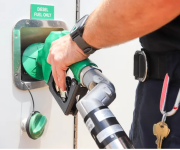Flex
Active member
- Joined
- Nov 26, 2022
- Messages
- 29

These are your top 20 things that can be causing you to spend more money on fuel.
List of Causes & Corrections for EXCESSIVE FUEL CONSUMPTION ON A ISX CM870
1. Operator technique is not correct
Correction
Explain correct engine operation to the operator.2. Equipment and environmental factors are affecting fuel consumption
Correction
Consider ambient temperatures, wind, tire size, axle alignment, routes, and use of aerodynamic aids when evaluating fuel consumption.3. Drivetrain is not correctly matched to the engine
Correction
Check for correct gearing and drivetrain components. Refer to the OEM vehicle specifications.4. Electronic fault codes active or high counts of inactive fault codes
Correction
Read the fault codes with an electronic service tool. Refer to Section TF for fault code troubleshooting.5. Programmable parameters or selected features are not correct
Correction
Check the programmable parameters and the selected features with an electronic service tool. Set the parameters and features again, if necessary.6. Turbocharger is not correct
Correction
Check the turbocharger part number and compare it to the Control Parts List.7. Fuel leak
Correction
Check the fuel lines, fuel connections, and fuel filters for leaks. Check the fuel lines to the supply tanks.8. Hubometer or odometer is miscalibrated
Correction
Check the hubometer and odometer calibrations. Calibrate or replace the hubometer or odometer, if necessary. Calculate fuel consumption with new mileage figures.9. Fuel grade is not correct for the application or the fuel quality is poor.
Correction
Operate the engine from a tank of known high quality fuel.10. Lubricating oil level is above specification
Correction
Check the oil level. Verify the dipstick calibration and oil pan capacity. Fill the system to the specified level.11. Engine control module (ECM) calibration is malfunctioning
Correction
Verify that the ECM calibration is correct.12. Vehicle speed sensor (VSS) is not correct
Correction
Use an electronic service tool to monitor the vehicle speed while the vehicle is not moving.13. Vehicle speed sensor (VSS) or circuit is malfunctioning
Correction
Check the vehicle speed sensor and circuit.14. Vehicle speed sensor (VSS) tampering has occurred
Correction
Check the vehicle speed sensor and circuit for tampering. Check for Fault Code 242.15. Air intake system restriction is above specification
Correction
Replace the air filter and inlet piping as necessary.16. Exhaust system restriction is not within specification
Correction
Check the exhaust system for restrictions.17. Injector is malfunctioning
Correction
Perform the cylinder performance test. Replace injectors as necessary.18. Engine has poor acceleration, poor response, or low power
Correction
Refer to Section TT, Engine Performance Troubleshooting.19. Valve lash adjustments are not correct
Correction
Measure and adjust the valve lash setting.20. Internal engine damage
